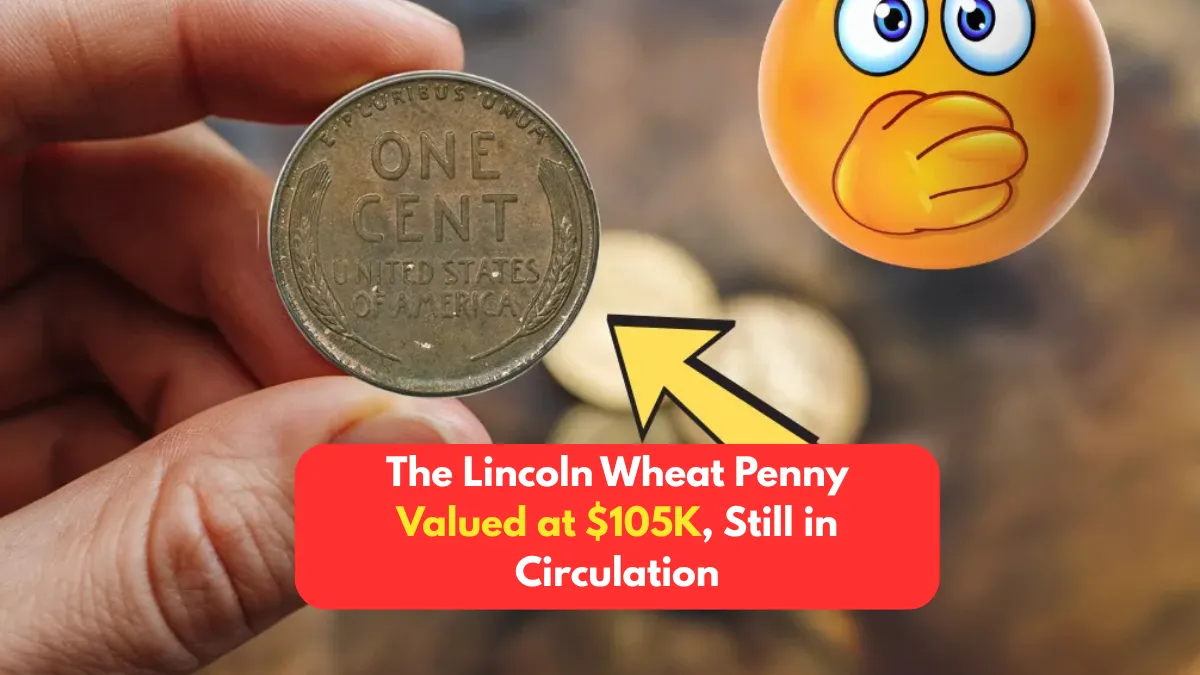Imagine finding a penny in your change jar that’s worth more than a luxury car. It may sound like a dream, but for collectors, it’s a real possibility. One specific Lincoln Wheat Penny has made headlines for being valued at $105,000, and according to experts, it may still be in circulation—hidden in plain sight.
The allure of this modest copper coin comes from a rare minting error, a specific date, and its surprising survival in near-pristine condition. In this article, we’ll uncover what makes this penny so valuable, how to spot one, and why it could be sitting in your pocket change right now.
A Brief History of the Lincoln Wheat Penny
The Lincoln Wheat Penny, or “Wheat Cent,” debuted in 1909, designed by Victor David Brenner to honor the 100th anniversary of Abraham Lincoln’s birth. It marked a shift in U.S. coinage, being the first American coin to feature a real person.
Key Features:
- Obverse: Lincoln’s profile facing right
- Reverse: Two wheat stalks framing the inscriptions “ONE CENT” and “UNITED STATES OF AMERICA”
- Years of circulation: 1909–1958
While most Wheat Pennies are only worth a few cents or dollars, some rare issues—due to low mintages or minting mistakes—can be worth thousands or even six figures.
The $105,000 Lincoln Wheat Penny: What’s the Story?
The penny in question is the 1944-S Lincoln Wheat Penny, but not just any 1944-S—it’s one that was accidentally struck in steel, not the usual bronze. This incredibly rare error coin has fetched up to $105,000 at auction in high-grade condition.
Why Is It So Valuable?
- Wrong Planchet Error:
In 1944, the U.S. Mint returned to using bronze planchets after making steel pennies in 1943 due to wartime copper shortages. But a few leftover steel blanks from 1943 were accidentally used in 1944. This created a tiny number of steel 1944 pennies, some of which were struck at the San Francisco Mint (marked by an “S”). - Extremely Low Numbers:
Experts estimate that fewer than two dozen 1944-S steel cents exist today. - Collector Demand:
Because of the anomaly and its wartime backstory, collectors are willing to pay massive sums for authenticated examples—especially those in excellent condition. - Confirmed Sales:
One 1944-S steel cent sold at auction for $105,000, according to public auction records. Others in slightly lower condition have still brought in tens of thousands.
How to Identify the $105K Lincoln Wheat Penny
Finding a coin like this is rare, but it’s not impossible. Here’s how to check if you’ve got the real deal:
1. Check the Date and Mint Mark
- Look for 1944 on the front of the coin.
- Check the mint mark beneath the date. An “S” indicates it was struck at the San Francisco Mint.
2. Test the Metal
- Steel pennies are grayish and magnetic.
- Bronze pennies are brownish-red and non-magnetic.
- A 1944-S penny should NOT be magnetic—if it is, you might have something rare.
3. Weigh the Coin
- Bronze pennies weigh 3.11 grams.
- Steel pennies weigh around 2.7 grams.
- Use a digital scale to confirm.
4. Examine the Surface
- Look for a smooth, silver-colored finish.
- Many steel cents rusted easily, so high-quality ones are even rarer.
5. Get It Authenticated
- If your 1944-S penny matches the above signs, have it examined by a professional grading service like PCGS or NGC.
Other Rare Wheat Pennies to Watch For
While the $105,000 penny is a true prize, many other Wheat Pennies are valuable too. Here are a few worth keeping an eye on:
- 1909-S VDB – Up to $3,000+
- 1914-D – Valued from $200 to $5,000
- 1922 “No D” – A Denver mint coin missing the mint mark; worth up to $2,500+
- 1955 Doubled Die – Famous for its doubled lettering; worth $1,000 to $15,000+
- 1943 Bronze Penny – Also worth six figures in rare cases
Why Rare Pennies Are Still in Circulation
It may sound strange, but valuable coins often end up in circulation due to:
- Estate collections being cashed in without knowledge of their value
- Inherited jars or piggy banks being exchanged at banks
- Older generations unknowingly spending or giving away rare coins
Coin hunters have found hidden treasures in rolls of pennies from banks, yard sale boxes, and even CoinStar machines.
Final Thoughts: A Penny for Your Fortune?
The idea that a $105,000 Lincoln Wheat Penny could still be out there, tucked away in a forgotten drawer or casually spent at a gas station, has reignited America’s love for coin collecting. While finding one may be rare, it’s not impossible—and it only takes a few seconds to check.
So the next time you get a handful of change, don’t overlook the humble penny. Because one day, a single one-cent coin might just change your life.
